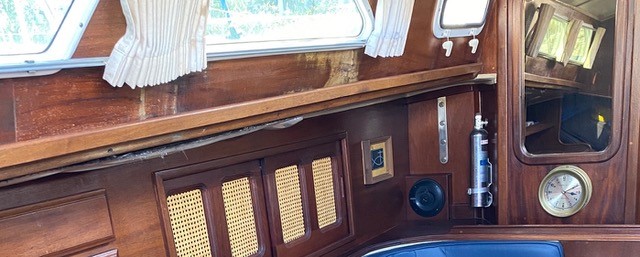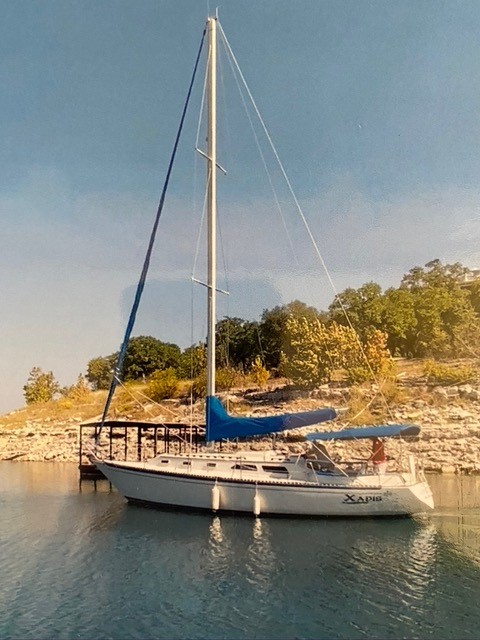Hi all,
New owner here- Sail #575 in Austin Texas.
I wanted to reach out to those of you, many of whom may already have gone through this exercise.
The survey revealed some prior leaks along the fixed windows along the port side. The prior owner explained he had experienced some leakage some years ago that dampened the ceiling material under the port gunwale and caused some peeling of the teak veneer just below both windows. He said he had not seen any wetness in a number of years, but we just had a slow three-day rain that has resulted in dampness.

As you can see, the veneer has pulled away and the headliner below the windows has worked its way loose over the years. I have not gotten to this task yet, but a cursory inspection leads me to think the vinyl covering is still viable, but the underlying substrate (marine plywood? some sort of mounting board connects to the horizontal rail and to the gunwale) is in pieces and will have to come out. I think there is a 6 foot run from just ahead of the front fixed window to 1/2 way along the rear one that has been affected.
I have ideas, but want to hear from you veterans before launching into this blindly. My surveyor (a sailor himself) has done some cut-to-fit teak veneer over sanded and repaired cabin sections on his boat, but I want to get your suggestions on repairing the underlying problem: laying back the headliner, hosing down the exterior to try to pinpoint the leak (s), sealing with, perhaps clear acrylic caulk, mounting some infrastructure onto which I can re-attach the headliner.
I am keen to eliminate as many sources of mold and mildew as I can, so this will be part cosmetic, but mostly structural integrity-based.
I am open to learn what you have experienced. I so much appreciate any inputs you may care to provide. Thanks for your help.
Cheers,
Fred & Chris Manley

|
Return to Maintenance Menu Return to Main Menu |